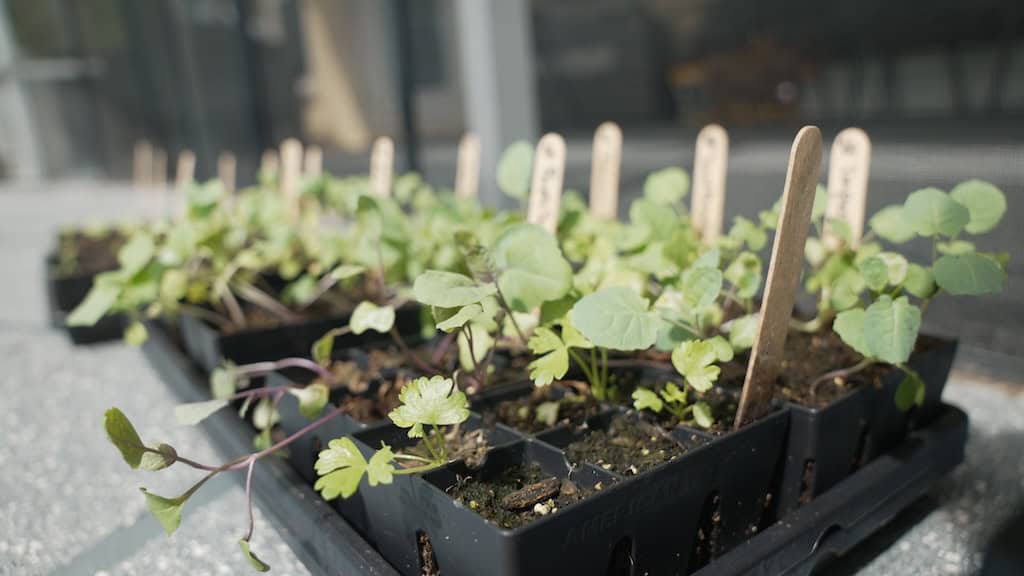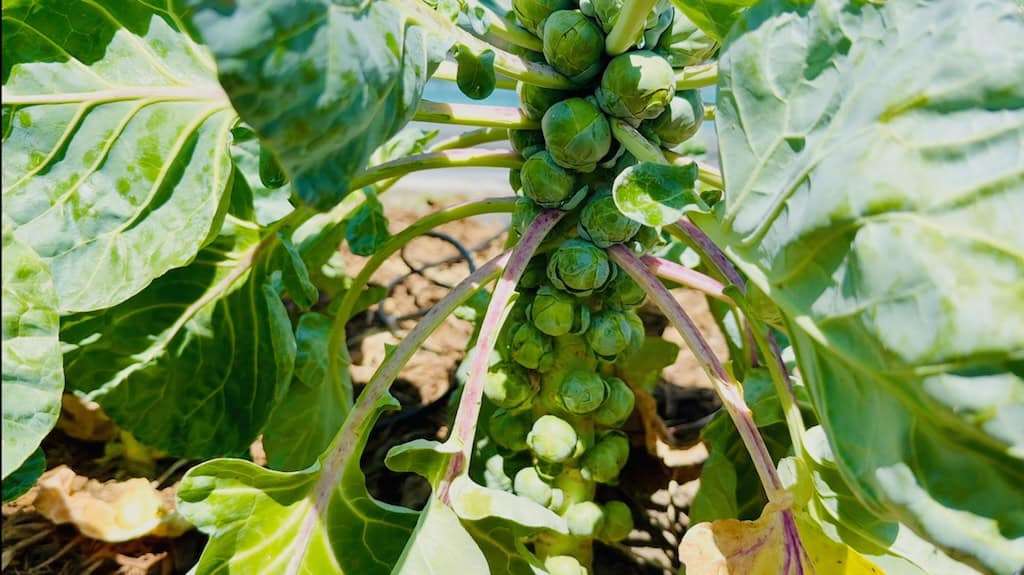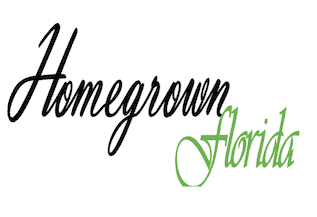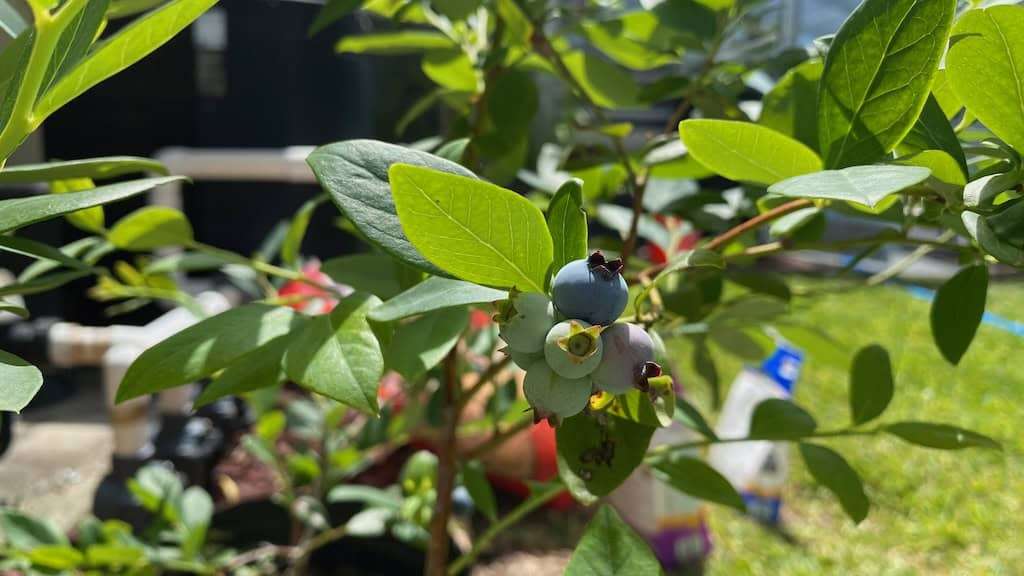Last Updated on April 24, 2025 by Homegrown Florida
Welcome Florida garden friends! I want to share with you today my experience and tips on how I sucessfully grow Brussels sprouts in Florida’s hot climate. I know it might sound a bit unconventional since Brussels sprouts are typically cool-weather crops, but with the right approach, it’s entirely possible to cultivate them successfully here.
Table of Contents
This post may contain affiliate links. Read full disclosure here.
1. Timing Is Everything to Grow Brussels Sprouts in Florida
Brussels sprouts have a long growing season, typically around four months. However, in Florida, they can take up to five or six months due to the time of year we need to grow them which occurs during winter when the number of daylight hours is shorter. The key is to start them at the right time.
I usually begin planting in September, even though it’s still quite warm. To protect the young plants from the intense heat and potential hurricane weather, I start them in trays placed in a shaded area. It’s crucial to wait until at least November to transplant them into the garden when nighttime temperatures consistently drop into the 60s or even 50s. This time also corresponds to the end of hurricane season which usually brings less rain.

Be mindful of the sun’s position during winter. In my garden, one side of the bed remains shaded throughout the winter months due to the sun’s lower angle and a nearby fence. This lack of sunlight can slow down growth, so choose a spot that receives all day winter sun. Often times we don’t grow plants in full sun here in Florida but during the winter, they can handle it much better than during summer. Full sun will also reduce the days to harvest during this shorter daylight time of year.
Understanding Florida’s Seasonal Shifts
Florida’s seasons are unique. Our “cool” season is relatively short, and temperatures can swing dramatically. For instance, we might experience a frost and then hit 90°F just one day later. This rapid change means we need to be strategic about planting and harvesting times.
Seed Starting Tips
When starting seeds in September:

- Use seed trays: This allows for better control over the growing environment.
- Provide shade: Protect seedlings from the intense sun using shade cloth or placing them under a tree canopy.
- Monitor moisture: Keep the soil consistently moist but not waterlogged.
By the time November rolls around, your seedlings should be robust enough to handle being moved out into the garden.
2. Choose the Right Variety
Not all Brussels sprout varieties are suited for Florida’s climate. I’ve experimented with several, including ‘Long Island Improved,’ ‘Catskill,’ and ‘Green Gem,’ but they didn’t perform well for me. The variety that has consistently yielded good results is ‘Jade Cross.’ It’s a hybrid known for its heat tolerance and faster maturity rate.

I understand that many gardeners prefer heirlooms, and I do too. However, in cases like this, hybrids can offer the resilience needed to thrive in challenging conditions. Remember, hybrids are not the same as GMOs; they’re simply the result of cross-breeding two different plant varieties to enhance certain traits. They are not genetically modified. I lean on hybrid varieties when I want to grow plants that don’t typically enjoy a super warm climate.
Check out My Favorite Veggie Varieties for a full breakdown of all fruits and veggies that I have had success with growing in my Florida garden.
Understanding Hybrids vs. Heirlooms
- Heirlooms: These are open-pollinated varieties passed down through generations. They tend to have consistent traits and are true to type when seeds are saved.
- Hybrids: Created by cross-pollinating two different varieties to produce offspring with specific desired traits, such as disease resistance or heat tolerance.
In Florida’s challenging climate, hybrids like ‘Jade Cross’ can provide the necessary vigor and adaptability to ensure a successful harvest.
3. Pruning for Productivity
Pruning plays a significant role in encouraging Brussels sprouts to develop properly. As the plants grow, I start removing the lower leaves around January. This practice helps the plant focus its energy on producing sprouts rather than maintaining unnecessary foliage.

Another technique I use is topping the plant. Once I notice the formation of tiny dimples (the beginnings of sprouts) and we’re well into January, I cut off the top of the plant at an angle. This not only directs the plant’s energy toward sprout development but also provides a delicious bonus: the tops are edible! They have a flavor similar to Brussels sprouts with a texture akin to kale. I like to roast them with a bit of olive oil, salt, and garlic powder. They are very similar to kale chips but with a brussel sprout flavor.
The Importance of Topping
Topping the plant encourages uniform sprout development along the stem. Here’s how to do it:
- Identify the growing tip: This is the cluster of leaves at the top of the plant.
- Use clean, sharp shears: Make a clean cut to prevent disease introduction.
- Cut at an angle: This prevents water from pooling on the cut surface, reducing the risk of rot.
After topping, the plant redirects its energy to developing the sprouts, leading to a more bountiful harvest.
Soil and Fertilization
To grow Brussels sprouts in Florida, you will need to focus on nutrients since they are heavy feeders and require nutrient-rich soil to thrive.
Soil Preparation
- pH Level: Aim for a soil pH between 6.2 and 6.8.
- Organic Matter: Incorporate compost or well-rotted manure to improve soil structure and fertility.
- Drainage: Ensure the soil drains well to prevent root rot.
Fertilization Schedule
- At Planting: Use a balanced fertilizer, such as Gardentone or PlantTone.
- Side Dressing: Apply additional nitrogen every 3-4 weeks to support continuous growth. I like to use Alaskas Fish Fertilizer
- Micronutrients: Brussels sprouts require boron. A deficiency can lead to hollow stems and poor sprout development. Compost usually provides these added nutrients but if you don’t have access, you can utilize a liquid micronutrient.
Watering and Mulching
Consistent moisture is crucial to grow Brussels sprouts in Florida.
- Watering: Aim for 1 to 1.5 inches of water per week. In sandy soils, you may need to water more frequently.
- Mulching: Apply a 3-inch layer of mulch to retain soil moisture, regulate temperature, and suppress weeds.
Pest and Disease Management
Brussels sprouts can be susceptible to various pests and diseases.

Common Pests
- Cabbage Loopers and Worms: These caterpillars can decimate foliage. Use row covers to prevent egg-laying and apply Bacillus thuringiensis (Bt) as needed.
- Aphids: These sap-sucking insects can be controlled with insecticidal soap or neem oil.
- Flea Beetles: These small beetles chew small holes in leaves. Floating row covers and diatomaceous earth can help manage them.
Diseases
- Black Rot and Clubroot: These soil-borne diseases can be mitigated by practicing crop rotation and ensuring proper drainage.
- Downy Mildew: Improve air circulation and avoid overhead watering to reduce the risk.
Harvesting and Storage
Brussels sprouts mature from the bottom up. Begin harvesting when the lower sprouts are firm and about 1 to 2 inches in diameter.

- Harvesting: Twist and pull the sprouts from the stem or use a sharp knife.
- Storage: Store unwashed sprouts in a plastic bag in the refrigerator for up to a week.
If you’re looking for even more detailed guidance on growing veggies here in Florida—like when to start seeds, how to manage pests, and what varieties really thrive—don’t forget to check out my ebook! It’s got a chapter for every single vegetable and is packed with everything I’ve learned over the years gardening in Florida.
To grow Brussels sprouts in Florida requires patience and attention to detail, but it’s definitely achievable. By focusing on proper timing, selecting the right variety, and providing the right nutrients and watering, you can be succesfully in growing brussles sprouts in your Florida garden. Happy Gardening!


